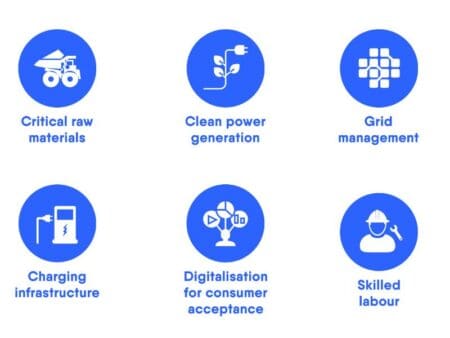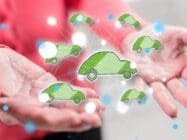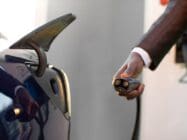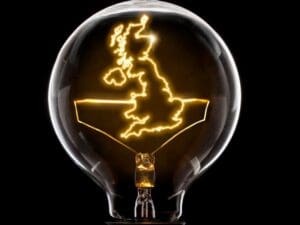
Smart charging, grid management, digitalisation, workforce upskilling, clean power generation and critical raw materials are the six essentials for upscaling mass-market electric vehicle uptake, according to a new study from Eurelectric and EY.
According to the report, 2022 was a bumper year for e-mobility. EV sales won around 20% of the market, up from 17% in 2021, reaching eight million units in Europe.
Driving into the mainstream, however, will depend on the ability to convince the mass-market customer to take the EV-turn.
Kristian Ruby, secretary general at Eurelectric, stated in announcing the report: “Getting our transport sector off its fossil fuel addiction is critical to achieve energy independence. The key to achieve that is to make the EV ecosystem the obvious choice for the consumer.”
The essentials for EV uptake
According to the report, bringing down battery prices will be the first step. This entails setting clear regulations and mandates to attract investments in a resilient supply chain.
Enhanced battery performance, recycling, and innovation in alternative chemistries as well as faster permitting and sustainable mining to ensure access to lithium, cobalt, and nickel are now urgently needed to escape dependencies on unreliable suppliers.
But the battery price tag is not the only factor to encourage consumers to make the switch.
The EV must be coupled with adequate charging infrastructure, in the places and spaces where people need it. It must be enabled by a smart grid that allows the two-way flow of green energy and supported by digital technologies that make EV ownership simple, flexible and likeable.
Have you read:
Central Europe set to secure EV battery recycling investment landscape
Iberdrola and bp sign €1bn alliance for EVs in Spain and Portugal
Lack of public charging infrastructures was found to be the first concern for potential EV buyers. Charging stations – whether at home, in the office, or on the road – must be quickly and evenly deployed across EU countries.
By 2030, Europe will need 5.4 million non-residential chargers from the 482,000 currently accessible to supply around 200TWh of energy demand for EVs. This raises challenges for grid balancing that must be addressed now to avoid overloads and blackouts later.
Smart grids to cope
According to the report, there is currently a shift in market from incentive and policy-led to one that is self-sustaining and backed by customer demand.
This is helped by price corrections for critical minerals, following record highs in 2022, which will feed through into cheaper batteries and more affordable vehicles.
As supply catches up with demand, global sales of plug-in and fully electric vehicles will climb from 10.5 million in 2022 to 14.3 million in 2023. In Europe specifically, EV sales are projected to climb 30% in 2023 as supply chain bottlenecks ease.
However, analysis by the IEA reveals that when EV stock exceeds 20% of electricity demand, the need for grid adaptation will become significant.
To cope with increased load and minimise the need for grid upgrades, alternative mechanisms and smarter solutions are emerging, such as flexible connection agreements, procurement of distributed flexibility, diverse tariffs and integrated charging networks among others.

Urska Skrt, mobility manager at World Business Council for Sustainable Development, states: “The technology is available. The next challenge, of course, is to change consumer behaviour and to remunerate flexibility, so that systems can be efficiently integrated.”
For EVs to become a resource rather than a challenge to grid stability, we urgently need coordinated grid plans and digital technologies for two-way communications and pricing between EVs and grids. In this light, the report hails Vehicle to Everything (V2X) tech as “the next big thing in smart charging”.
However, the technology is at a nascent stage, with around 78% of projects running on a trial basis.
Also of interest:
Flexibility key within new EU electricity market reform proposal
What’s in the Net Zero Industry and Critical Raw Materials Acts?
Turning data into insights
The report highlights data management a complex challenge, a result of the emergence of a ‘data highway’, which is emerging metaphorically and literally.
Data is generated at primary nodes — in EVs, at public and private chargers and by Charge Point Operators (CPOs) — within the e-mobility ecosystem.
As immense amounts of data is generated, issues raise around data storage, ownership, usage and regulation. It also provides opportunity for:
- Generating insights relevant to wider industry needs
- Understanding grid network capacity and other areas of concern
- Assessing suitability for renewable energy integration.
- Supporting identification of suitable locations for charging infrastructure.
To coordinate the data highway, the report looks at digitalisation, and thereby-enabled interoperability, as an answer.
To enable this, numerous touch points will need to be addressed, including:
- Open protocols to support neutral interconnections between EVs, CPOs and e-mobility service providers (EMSPs) and to enable roaming and grid connection.
- An open connected platform neeeded for data sharing, alongside fair and transparent data access requirements.
- A digital twin needed of the grid to model traffic density, grid network capacity and potential for renewable integration, as well as to identify suitable sites, land usage requirements and permits.

Utilities and policymakers will steer the charge
EV numbers will continue to rise, a consequence of market dynamics and technological, regulatory and economic drivers. But, as we speed towards the point of no return, utility companies must continue to play their critical role in delivering the EV solution.
Utilities will play a huge role in pushing the e-mobility industry into mass adoption, by rolling out new and upgraded networks and renewable projects. Regulators, however, must also be on board with a clear enabling framework.
Through release of the report, Eurelectric is calling on policymakers to:
- Expand, upgrade, and climate-proof distribution grids
- Streamline permitting to reduce delays in installing charging infrastructure and incentivise businesses to install charging stations via tax credits and subsidies
- Support flexible technologies such as smart meters and vehicle-to-grid to enable demand-side response and raise awareness on how citizens can become active energy transitioners;
- Encourage investments in domestic raw material production, recyclability, and alternative battery technologies








